The AMD Radeon R9 Fury X Review: Aiming For the Top
by Ryan Smith on July 2, 2015 11:15 AM ESTOverclocking
Finally, no review of a high-end video card would be complete without a look at overclocking performance.
To get right to the point here, overclockers looking at out of the box overclocking performance are going to come away disappointed. While cooling and power delivery are overbuilt, in other respects the R9 Fury X is very locked down when it comes to overclocking. There is no voltage control at this time (even unofficial), there is no official HBM clockspeed control, and the card’s voltage profile has been finely tuned to avoid needing to supply the card with more voltage than is necessary. As a result the card has relatively little overclocking potential without voltage adjustments.
So what do we get for overclocking?
| Radeon R9 Fury X Overclocking | ||||
| Stock | Overclocked | |||
| Boost Clock | 1050Mhz | 1125MHz | ||
| Memory Clock | 1Gbps (500MHz DDR) | 1Gbps (500MHz DDR) | ||
| Max Voltage | N/A | N/A | ||
Our efforts net us 75MHz, which is actually 25MHz less than what AMD published in their reviewer’s guide. Even 100MHz would lead to artifacting in some games, requiring that we step down to a 75MHz overclock to have a safe and sustainable overclock.
The end result is that the overclocked R9 Fury X runs at 1125MHz core and 1Gbps memory, a 75MHz (7%) increase in the GPU clockspeed and 0% increase in the memory clockspeed. This puts a very narrow window on expected performance gains, as we shouldn’t exceed a 7% gain in any game, and will almost certainly come in below 7% in most games.

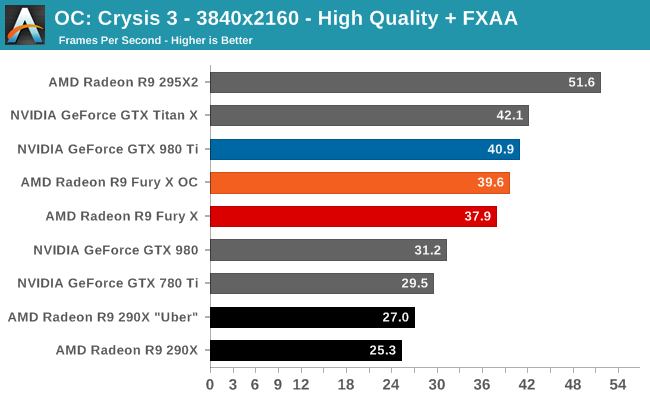
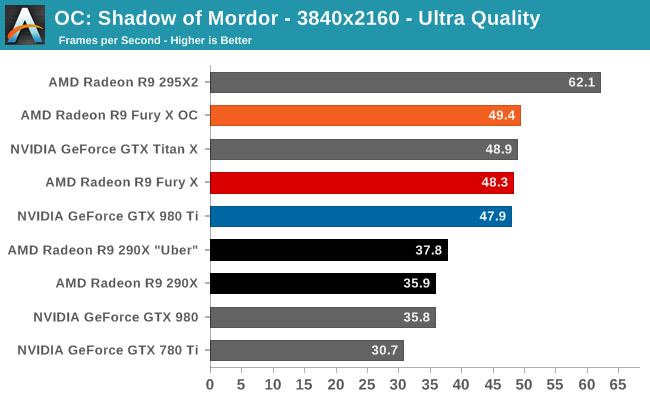
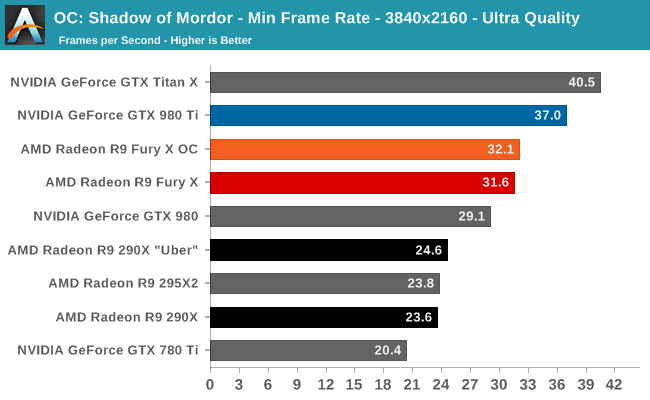

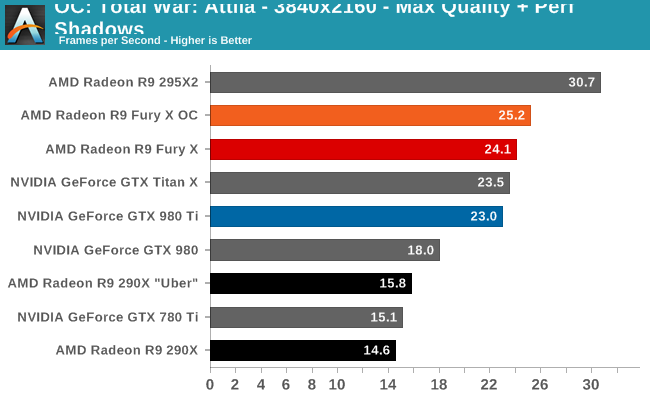
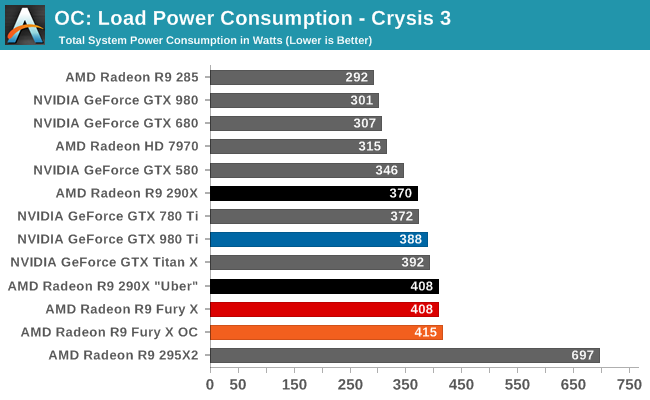


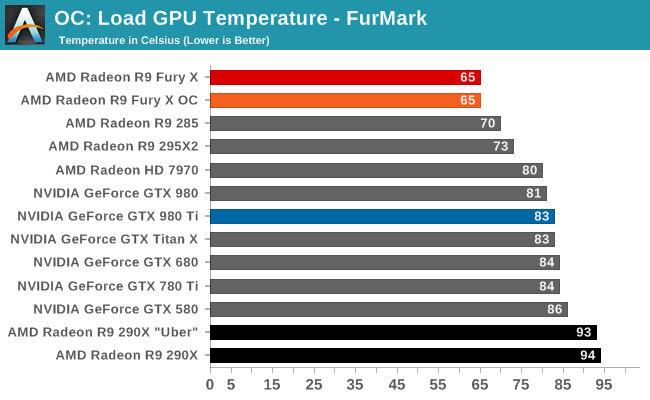

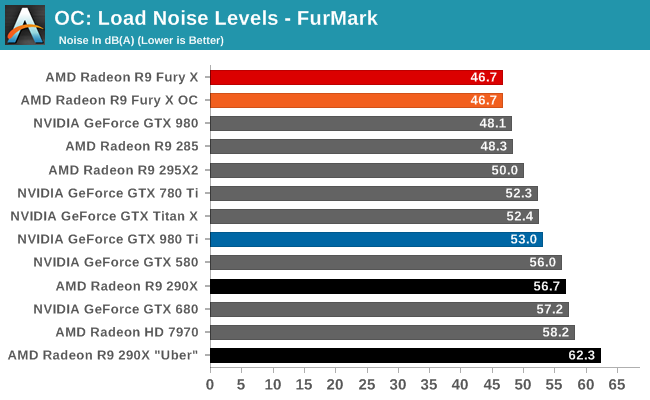
Our gaming benchmarks find just that. A few percent performance improvement there, a 5% improvement there. Overall we wouldn’t go as far as saying there no reason to overclock, but with such limited gains it’s hardly worth the trouble right now.
True overclocking is going to have to involve BIOS modding, a riskier and warranty-voiding strategy, but one that should be far more rewarding. With more voltage I have little doubt that R9 Fury X could clock higher, though it’s impossible to guess by how much at this time. In any case the card is certainly built for it, as the oversized cooler, high power delivery capabilities, and dual BIOS switch provide all the components necessary for such an overclocking attempt.
Meanwhile HBM is a completely different bag, and while unofficial overclocking is looking promising, as a new technology it will take some time to get a good feel for it and understand just what kind of performance improvements it can deliver. The R9 Fury X is starting out with quite a bit of memory bandwidth right off the bat (512GB/sec), so it may not be bandwidth starved as often as other cards like the R9 290X was.


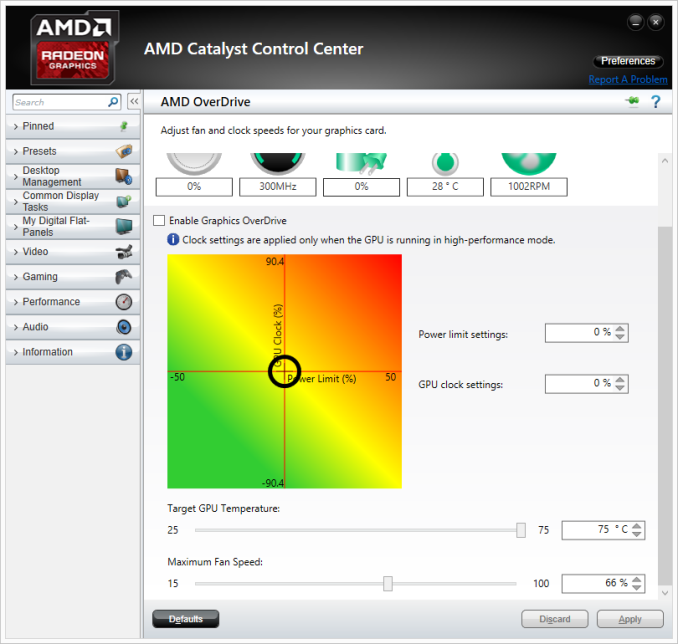








458 Comments
View All Comments
mikato - Tuesday, July 7, 2015 - link
Wow very interesting, thanks bugsy. I hope those guys at the various forums can work out the details and maybe a reputable tech reviewer will take a look.OrphanageExplosion - Saturday, July 4, 2015 - link
I'm still a bit perplexed about how AMD gets an absolute roasting for CrossFire frame-pacing - which only impacted a tiny amount of users - while the sub-optimal DirectX 11 driver (which will affect everyone to varying extents in CPU-bound scenarios) doesn't get anything like the same level of attention.I mean, AMD commands a niche when it comes to the value end of the market, but if you're combining a budget CPU with one of their value GPUs, chances are that in many games you're not going to see the same kind of performance you see from benchmarks carried out on mammoth i7 systems.
And here, we've reached a situation where not even the i7 benchmarking scenario can hide the impact of the driver on a $650 part, hence the poor 1440p performance (which is even worse at 1080p). Why invest all that R&D, time, effort and money into this mammoth piece of hardware and not improve the driver so we can actually see what it's capable of? Is AMD just sitting it out until DX12?
harrydr - Saturday, July 4, 2015 - link
With the black screen problem of r9 graphic cards not easy to support amd.Oxford Guy - Saturday, July 4, 2015 - link
Because lying to customers about VRAM performance, ROP count, and cache size is a far better way to conduct business.Oh, and the 970's specs are still false on Nvidia's website (claims 224 GB/s but that is impossible because of the 28 GB/s partition and the XOR contention — the more the slow partition is used the closer the other partition can get to the theoretical speed of 224 but the more it's used the more the faster partition is slowed by the 28 GB/s sloth — so a catch-22).
It's pretty amazing that Anandtech came out with a "Correcting the Specs" article but Nvidia is still claiming false numbers on their website.
Peichen - Monday, July 6, 2015 - link
And yet 970 is still faster. Nvidia is more efficient with resources than they let people on.Oxford Guy - Thursday, July 9, 2015 - link
The XOR contention and 28 GB/s sure is efficiency. If only the 8800 GT could have had VRAM that slow back in 2007.Gunbuster - Saturday, July 4, 2015 - link
Came for the chizow, was not disappointed.chizow - Monday, July 6, 2015 - link
:)madwolfa - Saturday, July 4, 2015 - link
"Throw a couple of these into a Micro-ATX SFF PC, and it will be the PSU, not the video cards, that become your biggest concern".I think the biggest concern here would be to fit a couple of 120mm radiators.
TheinsanegamerN - Saturday, July 4, 2015 - link
My current Micro-ATX case has room for dual 120mm rads and a 240mm rad. plenty of room there